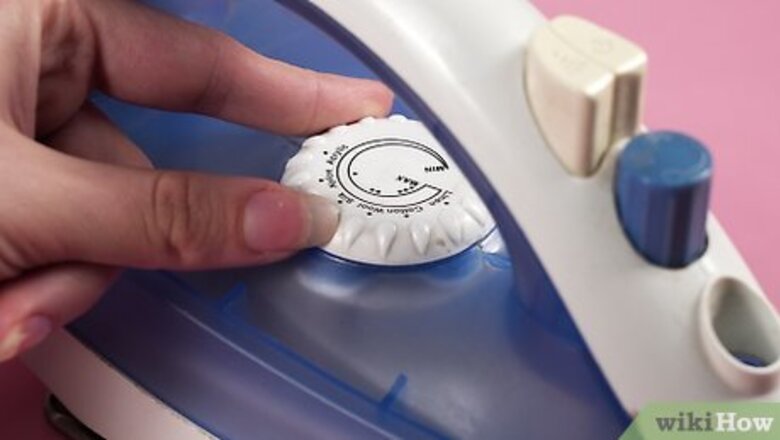
views
- Pour 5-7 tablespoons (28-40 g) of coarse salt over paper towels, newspaper, or aluminum foil.
- Turn the iron to its highest setting, then gently rub it over the salt in circular motions until the stains are gone, usually 2-10 minutes, depending on their severity.
- Prevent future stains by only using distilled water in your iron and laying down a piece of cloth over the items you iron (so residue sticks to the cloth, not the iron).
Cleaning a Burnt Iron With Salt
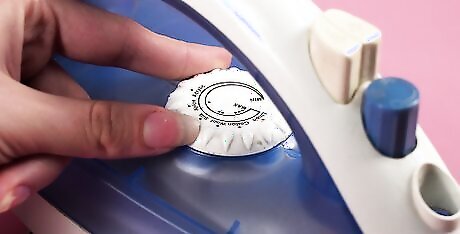
Turn the iron on the highest setting. Let your iron sit for 10 minutes to reach its maximum heat. There is often a light indicator on the iron that lets you know when it has reached the desired temperature. The iron will be quite hot, so take care not to burn yourself or other objects around you—especially things that could melt, like plastic.
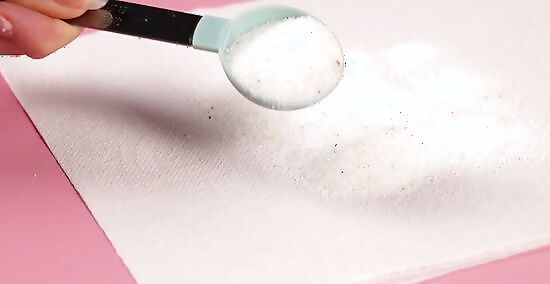
Pour 5-7 tablespoons (28-40 g) of salt on a paper towel. Lay several paper towels down, then pour a generous amount of salt over them—about 5-7 tablespoons (28-40 g). You can use table salt, but coarse salts (like kosher and rock salt) work the best.
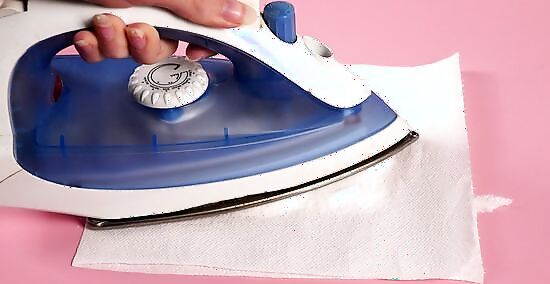
Run the iron over the salt. Once the iron is hot enough, run it back and forth over the towel, or in small circular motions. Pick up the iron after each circle to prevent the salt from gathering in one place. Depending on the severity of your stain, it could take 2-10 minutes. Don’t use any liquid or steam on the paper towel. If the paper towel doesn’t work, try pouring salt on tin foil, newspaper, or a paper bag and repeating the process.
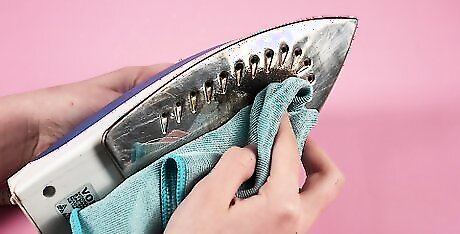
Wipe the iron with ammonia if stains remain. For extra tough stains, let the iron cool completely, then wipe it down with a clean rag dipped in ammonia. Wipe off the bottom of the iron with a damp cloth afterward so you don’t transfer the ammonia smell to the next thing you iron. This works best on greasy stains.
Other Ways to Clean an Iron
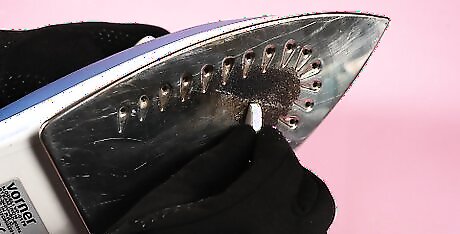
Melt a Tylenol pill on the stain. Turn your iron to its highest setting and let it heat up. With a pair of heat proof gloves or oven mitts, hold a Tylenol against the stain. After the pill melts and the stain dissolves, wipe off the residue with a damp cloth or paper towel. Any acetaminophen tablet will do, not just name-brand Tylenol. Don’t hold the pill with tweezers, or you run the risk of scratching your iron.
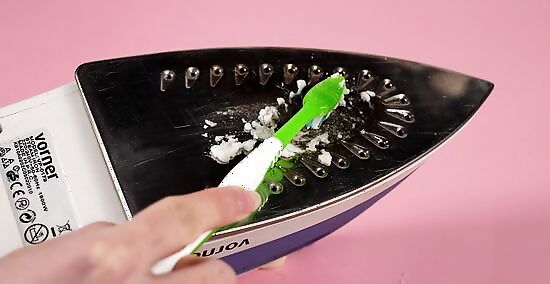
Scrub the iron with 2 parts baking soda and 1 part water. Make a paste out of the baking soda and water, then spread it over a cold iron. Let it sit for a few minutes, then scrub it off with a toothbrush. Avoid the steam holes, if you can. If the paste gets into the holes, clean them out with cotton swabs dipped in white vinegar. You can also mix some toothpaste into the solution for additional cleaning power.
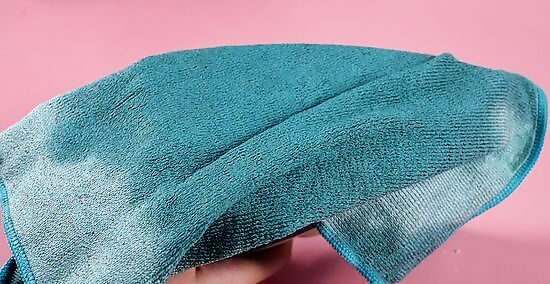
Soak or rub down the iron with vinegar. If you have corrosion on your iron, soak a towel in vinegar and let it sit on the cold metal plate of the iron for 30 minutes. If you have burn marks, soak a microfiber towel in vinegar and use it to scrub the plate. Wipe the iron with water after the stains are gone.
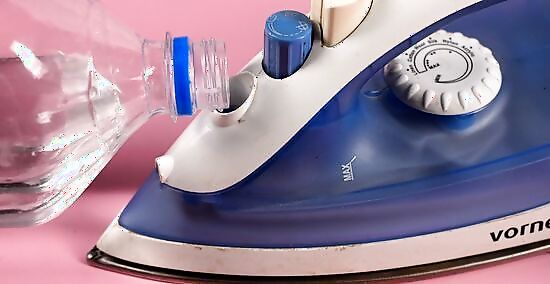
Fill the reservoir with vinegar and water for mineral build-up. Put 1 part vinegar and 1 part distilled water into your reservoir—enough to fill it up. Turn the iron on high and let it heat up. Lay an old towel on an ironing board and steam it with the iron until the reservoir is completely empty. If there’s still gunk coming out of your vents, repeat the process. Use a towel you don’t care about, since you’re pushing the minerals out onto the cloth.
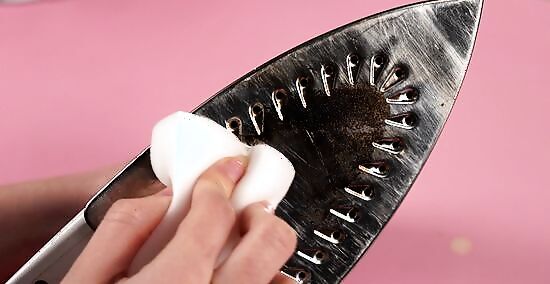
Scrub stains with a wet Magic Eraser. When your iron is cool, dip a Magic Eraser in water and scrub off the stains. Keep re-wetting the eraser and scrubbing until all the stains are gone.
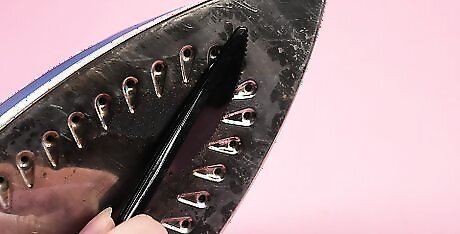
Scrape hardened plastic off with a plastic knife. If you accidentally iron something plastic, immediately turn the iron off and unplug it. Quickly cool the plastic by putting the iron plate-side down into a bowl of ice, then scrape off the plastic with a plastic knife. If the stain is old, skip the ice bath. Don’t use a metal knife, or you could scrape the soleplate. Avoid ironing any fabrics until the iron is clean, or you could spread the plastic on your clothes.
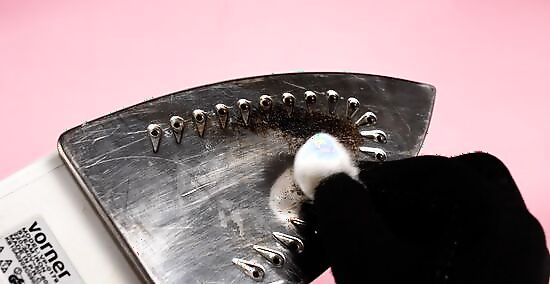
Wipe down a hot iron with nail polish remover. Some especially tough stains can be removed with nail polish remover, or acetone. Take the iron outside and turn it on to its highest setting. Put on heat-resistant gloves, soak a cotton ball in acetone, and rub it over the stain. Wipe off the iron with a damp paper towel once you’re done. Hot acetone produces fumes, so always do this outside or in a very well-ventilated area.
Preventing Stains & Damage
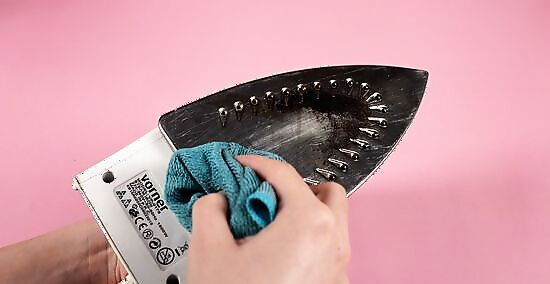
Wipe down the iron after each use. Routinely clean and wipe down your iron to prevent stains and mineral build-up. Each time you finish using the iron, let it cool down, then wipe it off with paper towels and distilled white vinegar or water. If you use vinegar, clean it off with a damp paper towel afterward to prevent transferring it to the next thing you iron.
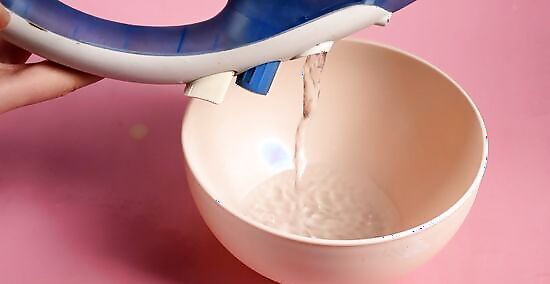
Use distilled water or regularly empty the reservoir. If you use tap water, dump out any remaining water in the reservoir after each use. Leaving water in the iron can create mineral deposits that can be difficult to clean later. To prevent mineral buildup entirely, only use distilled water.
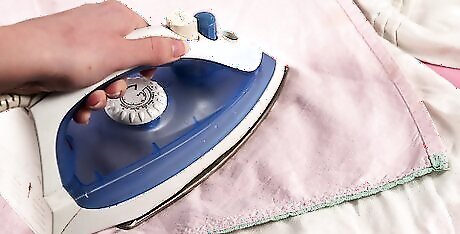
Put a layer between the iron and your cloth. Lay a thin towel or cloth over whatever you’re ironing to protect your soleplate from stains. That way, the cloth picks up any residue, instead of your iron.
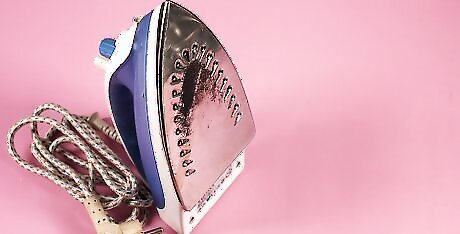
Store the iron properly. When you’re finished using the iron, give it plenty of time to cool down before putting it away. Irons should be completely cool to the touch before being stored. Put the iron in a place where it’s out of the way and safe from dust – like in a cupboard or a closet. Putting a protective covering over the iron (like a plastic bag) prevents dust from settling on the machine between uses. It also helps keep your iron clean and protects it from corrosion and humidity.



















Comments
0 comment